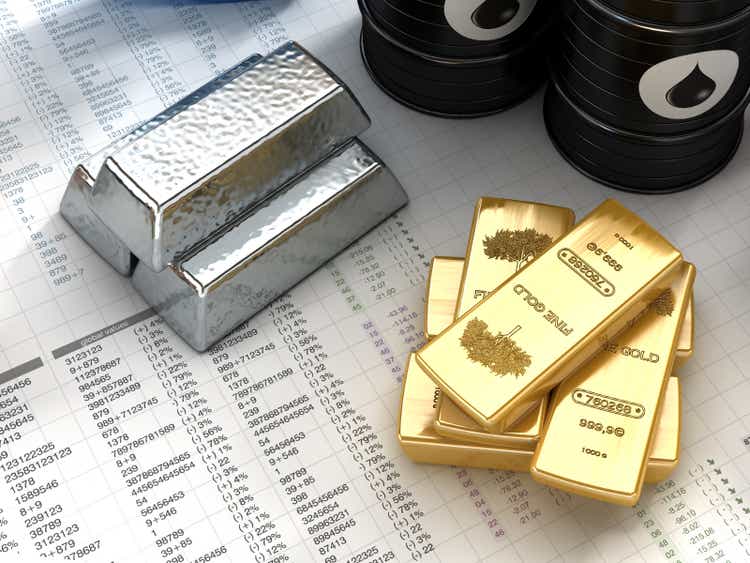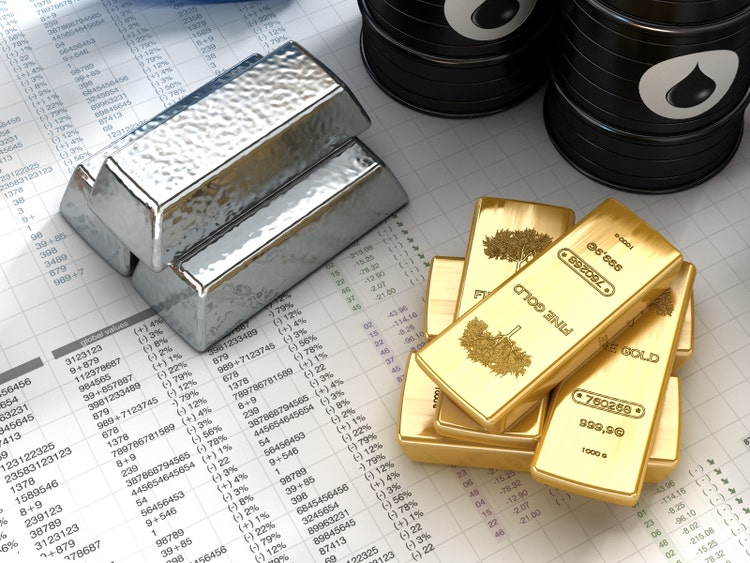[ad_1]
adventtr/E+ via Getty Images
Investment thesis and background
I recently wrote about the following three good reasons to add silver to your portfolio:
- The first two reasons are to hedge against inflation and geopolitical uncertainties because of its role both as a currency metal and also commercial applications.
- And the third reason is the favorable odds for its price rebound after years of compression.
Today, I will explain three more reasons why we hold silver in our portfolio. And more specifically, why we use the Aberdeen Standard Physical Silver Shares ETF (SIVR) as our vehicle to gain exposure to silver. These reasons are:
- It features a low expense ratio.
- Now is a good time to set up a silver-gold trade
- Its negative correlation against the volatility index (the fear index).
Under this background, the following chart shows our detailed holdings in our own growth portfolio and its performance since Feb 1, 2022 (since we launched our marketplace service even though we have been using this portfolio strategy for more than a decade). You can see we hold about 4.8% of SIVR.
You can also see that our portfolio uses a balanced approach augmented by high-quality tactical stocks. Thanks to such an approach, our portfolio outperformed the overall market consistently (and even made a small profit during the past month when the market went through extreme turbulence).
Author
Reason 1 – good tradability but low expense ratio
Much of the detailed information about the SIVR fund has been covered in my previous article and won’t be covered here anymore. Here, I will just provide a recap of the most relevant information to facilitate the new discussions. The SIVR ETF is physically backed with allocated metal bars stored in HSBC vaults. These vaults are inspected 2x per annum and once at random. The SIVR ETF, therefore, provides investors a convenient and low-cost way to own physical silver bars without having to go through the trouble and cost of managing storage, insurance, security et al.
When selecting the fund to gain silver exposure, we considered three candidates: SIVR, iShares Silver Trust (SLV), and also the Sprott Physical Silver Trust (PSLV). In the end, we settled on SIVR mostly because of its low expense ratio and the fact that we have no need to trade actively.
For example, the following chart compares SIVR versus SLV. SLV is significantly larger with $15B total asset, compared to about $1B for SIVR. And also, SLV is also traded much more actively (about $600M daily volume vs $16M for SIVR). But the average spread is the same for both funds. For long-term investors who trade infrequently like ourselves, both funds essentially offer the same tradability.
For us, then the deciding factor becomes the expense. As seen, SIVR charges a lower expense ratio (0.30% for SIVR vs 0.50% for SLV). The cost for PSLV is even higher. It charges an expense ratio of 0.62%.
These costs do not seem to be large in absolute terms. But when compared to the longer-term benefit after inflation as detailed in my earlier article, these costs become more pronounced over the long term.
Source: ETF.com
Reason 2: Silver-gold trade
As seen from the following chart, the gold-silver price ratio has been range-bound between about 30 and 90 since the 1980s with a long-term average of ~60. Currently, the gold-silver price ratio is ~77, substantially above the historical average and near the highest end of the historical spectrum.
The current price ratio is even more attractive when you consider the so-called geometric average. Here’s a little bit of math 101. For prices that change in a large range (such as silver and gold prices), the geometric average (or logarithm average) is more meaningful. It is about a 52 for gold-silver price ratio in the long term as seen. It is calculated as the square root of 30 times 90 (the bottom ratio and the peak ratio). You can easily confirm that 52 is 73% above 30 (the bottom), and 90 (the peak) is also 73% above 52 – while the simple arithmetic average of 60 does not enjoy this magic property.
The current ratio of 77 is almost 30% above the simple arithmetic mean, and almost 50% above the geometric mean of 52.
We ourselves have started a silver-gold trade since 2018 when the gold-silver price ratio started to exceed 85. Currently, the ratio is at 77. And at the same time, both silver and gold prices have also appreciated significantly since then. So this trade luckily has worked out pretty well.
Currently, the ratio is at 78 and still provides favorable odds for the trade. As such, we haven’t exited all our trades yet as aforementioned. And we are holding gold and silver to about a 1:1 ratio as of now. We will continue monitoring the ratio and adjusting our trades.
YCharts and Seeking Alpha
Reason 3: negative correlation against volatility index
Silver is considered a safe haven asset because of its role as a currency metal and also its extensive commercial and industrial applications. As a result, historically silver has shown a negative correlation to the volatility index (or the so-called fear index), as you can see from the following chart.
The top panel of the chart shows the SIVR price over the past five years plotted weekly. And the lower panel shows its correlation against the volatility index (“VIX”). As you can see, the correlation has been below 0 the majority of the time. As a result of such a negative correlation, adding silver can significantly reduce the volatility of your portfolio. And we have just witnessed this ourselves during the past month in our own portfolio.
Source: StockCharts
Final thoughts and risks
There are good reasons to consider adding silver to your portfolio now, and more specifically, consider using SIVR to gain exposure to silver. These reasons include:
- It features a low expense ratio compared to its main competition funds SLV and PSLV.
- Now is a good time to set up a silver-gold trade with a gold-silver price substantially above the historical average.
- Its negative correlation against the volatility index (the fear index) can help to significantly reduce the volatility of your portfolio.
There are risks associated with SIVR and silver in general though. If you do want to hold SIVR or silver, be aware of the following issues and risks:
- Silver price is subject to large volatility, larger than both gold and the S&P500 index by a good margin.
- Silver (or gold) does not pay dividends.
- Even though SIVR charges a relatively low 0.3% expense ratio, it is still high compared to other assets. For example, it is 10x higher than our other core funds such as VTI (whose expense is 0.03%).
- Lastly, the gold-silver trade does not guarantee to generate a positive return. It is a reliable method to accumulate more silver and/or gold in terms of shares (or weight), but not in dollar amounts. The dollar amount worth is determined by both how much you hold (which the trade can help) and the prices (which the trade cannot help).
[ad_2]
Source links Google News

